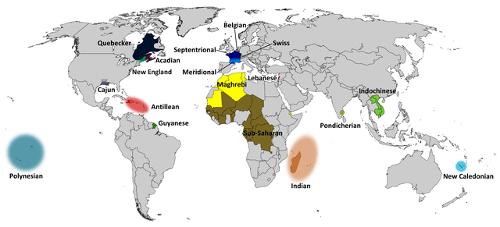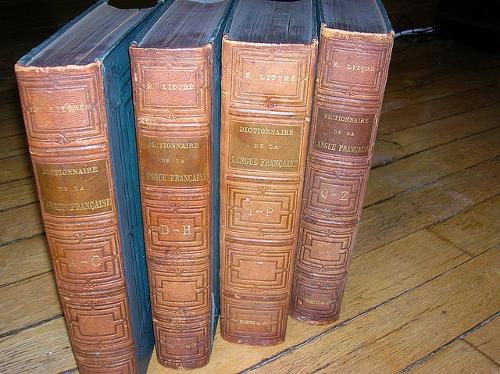LANGUEDOC-ROUSSILLON
Language

Language

Popular destinations FRANCE
| Alsace | Ardeche | Auvergne |
| Brittany | Burgundy | Cevennes |
| Corsica | Cote d'azur | Dordogne |
| Jura | Languedoc-roussillon | Loire valley |
| Lot | Normandy | Picardy |
| Provence |
Language
The official language is French, in addition, minorities speak Breton (Brittany), Occitan (the south), Basque (in the western Pyrenees), German (Alsace-Lorraine), Dutch (French Flanders), Catalan (Roussillon), Italian (around Nice), Corsican (in Corsica).
The French language is a Roman language spoken by approximately 100 million people as their mother tongue, of which approximately 60 million in France. French is further spoken in Belgium down the line Visé-Mouscron and Brussels, in Switzerland (Suisse romande), Italy (Aosta Valley), Haiti and Canada (Quebec), and in many former French colonies. Where Frenche is the language of administration and administration French is a continuation of the Vulgar Latin, which was introduced and developed in Gallia Transalpina by the Roman conquerors (58–50 BC). Dialects of the French language worldwidePhoto: Jonatan argento CC 3.0 Unported no changes made
Dialects of the French language worldwidePhoto: Jonatan argento CC 3.0 Unported no changes made
The history of French begins when the Carolingian Renaissance, which revived the study of Classical Latin, made people aware of a gap between Latin, language of administration, jurisdiction and religion, and everyday language. This is evidenced, among other things, by a decision of the Council of Tours (813), which henceforth had to be preached in the vernacular ("lingua romana rustica"). Broadly speaking, three periods can be distinguished in the history of French: Old French (early 9th - early 14th century), Middle French (early 14th - early 17th century) and modern French (early 17th century - present). 4 volume French dictionary (1889)Photo: LPLT / Wikimedia Commons CC 3.0 Unported no changes made
4 volume French dictionary (1889)Photo: LPLT / Wikimedia Commons CC 3.0 Unported no changes made
The French language originally consisted of Latin words introduced by the Romans, supplemented by words of Celtic and Frankish origin. From the 12th century onwards, these "folk words" are borrowed from Latin, the "learned" words. In the 16th century, many words were also borrowed from Italian. Many words have also been borrowed from Dutch and, since the 18th century, also from English.
Especially in recent decades, much has been borrowed from English in the field of technology, sports, fashion, and the like, which has resulted in the derisive term Franglais. French purists oppose this "invasion" of foreign words.
Occitan
General
Occitan belongs to the occitano-romanic family of languages, of which only Catalan is a member. These languages were probably one until the 12th century, today the main difference is in the spelling. Occitan is spelled in a manner close to Latin, whereas Catalan is spelled in a manner closer to the pronunciation. It was not until 1934 that the Catalan language union decided to have its own union, separate from Occitan. Spelling rules for both languages were redrafted in the 19th century, after neither language had been used in written form for centuries. Due to the historical situation, Occitan has undergone many French influences and Catalan many Spanish influences.
Area of distribution
A large part of the southern half of France is considered to be part of the Occitan language area. One exception is Roussillon, which lies north of the Pyrenees, and in particular the Pyrénées Orientales department. This area belongs to the Catalan language area. Although there are a large number of known regional variants, the Occitan language area is roughly divided into three:
-the Gascon, spoken in the area between Bordeaux, Toulouse and the Pyrenees
-the Occitan Meridional, or Southern Occitan, spoken along the Mediterranean coast
-the Nòrd-Occitan, which is spoken in the area from Limoges, the Massif Central to the Alps
Within these varieties, the following dialects are considered part of the Occitan language area: Aranean (Val d'Aran), Auvernhàt (Auvergne), Gascon (Gascony), Lemosin (Limousin), Lengadocian (Languedoc), Provençau (Provence), and Aupenc (Vivarais).
Origine
In the 12th century, France could be divided into two language areas, where the language was named with the respective word for 'yes': Oc (Latin: hoc) in the south and Oïl (an old form of oui, Latin: hoc ille) in the north.
The Langue d'Oc developed from the Volkslatin under the influence of the language of the Visigoths (Westgoths), who had settled in the region after the migration of the people. The area of distribution of the Langue d'Oc therefore corresponded roughly to the north of the Iberian Peninsula, the south of today's France and the northwest of Italy. Occitan is linguistically more closely related to Spanish than to French, which has undergone many more Celtic and Germanic influences.
Occitan has over four times as many words as French. The influence of this language on other languages was therefore considerable from the 12th to the 14th century, particularly on French, Italian, Spanish and English - large parts of the Occitan language area were under English rule at that time.
Development
At its peak, the Langue d'Oc was the legal and administrative language of the region under the influence of the County of Toulouse. Much courtly literature was originally written in the Langue d'Oc and troubadours made the language popular at the courts of Europe. Also one of the first translations of the Bible into a vernacular language, at least the New Testament, was written by the Cathars in the Langue d'Oc.
After the death of the last count, Raymond VIII, in 1249, the county of Toulouse came under the French crown and French slowly but surely took over as the official language. Deprived of its centre, the Langue d'Oc lost its unity and a number of regional languages developed from it. With the Edict of Villers-Cotterêts in 1539, King François I imposed French for all official documents. This meant the end for the written form of the Langue d'Oc and its variants. However, Occitan remained the most important spoken language in southern France until the French Revolution in 1789. At that time, French was the language of freedom and progress and all other languages were considered old-fashioned, peasant or a gibberish.
In the 18th and especially the 19th century, written Occitan experienced a modest rebirth due to:
-the Romantic era, in which medieval literature became popular again
-the rise of the labour movement, in which Occitan became a kind of command language
-the increasing power of the bourgeoisie, which used regional numbers as a sign of regional awareness
-The writing down of the grammar and spelling by scientists.
Currently, Occitan is an endangered minority language. Approximately 65% of the inhabitants of Occitania understand Occitan and approximately 2 million people still speak the language every day, most of whom, however, are elderly or rural. However, a cultural circuit has arisen that is intensively engaged in the poetry and music of the 12th century. The New Age movement and the Internet play an important role in this.
Sources
Bongartz, M. / Languedoc-Roussillon
ANWB
Brutinot, L. / Languedoc-Roussillon
ANWB
Deggau, H. / Wandelgids Cevennen en Languedoc
ANWB
Encarta Encyclopedie
Graaf, G. de / Languedoc-Roussillon
ANWB
Hiddema, B. / Languedoc-Roussillon : Camargue, Cevennen
ANWB
Languedoc-Roussillon
Lannoo
Languedoc Roussillon : Gorges du Tarn, Cevennen, Carcassonne, Perpignan
Lannoo
Pijnenburg, H. / Cevennen, Languedoc
Gottmer/Becht
CIA - World Factbook
BBC - Country Profiles
Copyright: Team The World of Info